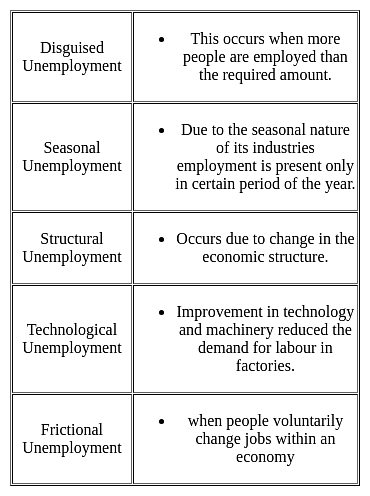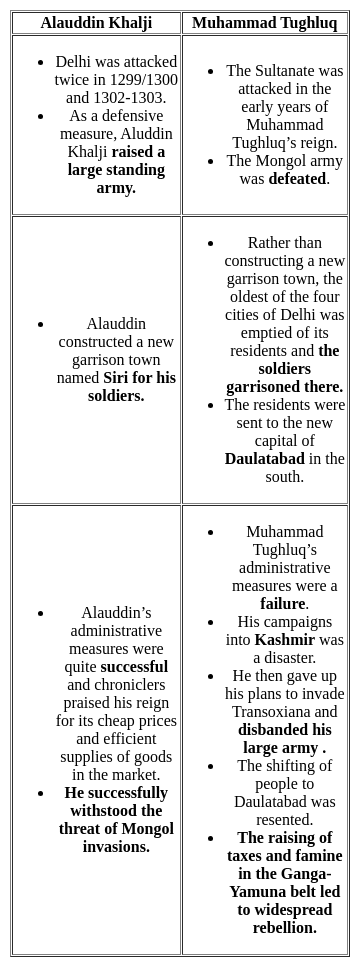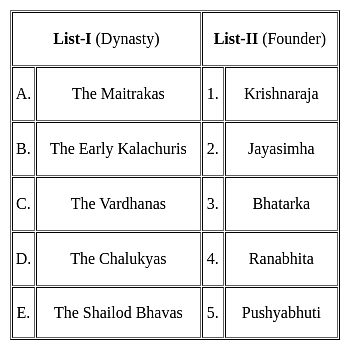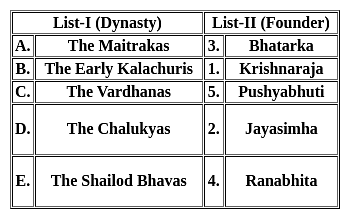UGC NET Paper 2 History Mock Test - 4 - UGC NET MCQ
30 Questions MCQ Test UGC NET Mock Test Series 2024 - UGC NET Paper 2 History Mock Test - 4
Which of the following is the basic cause of cyclical unemployment ?
| 1 Crore+ students have signed up on EduRev. Have you? Download the App |
Consider the following statements with reference to the poetry tradition of Indian history:
1. The Samhitas are a compilation of hymns, prayers and archetypal poetry.
2. Malatibhava, written by Kalidasa, is a part of Early Sanskrit literature.
3. In Sangam literature, while Ettutogai is a collection of eight anthologies of poems, Pathupattu is a collection of ten long poems.
4. Under Telugu literature, song literature called pattu flourished.
Which of the above statements is/are correct?
The First Cotton Textile Mill was established in India at
Consider the following statements regarding Humayun:
1. Shershah Suri defeated Humayun in the Battle of Bilgram
2. He defeated Afghans and set up the Mughal throne.
3. He was a highly learned person.
Which of the above statements is/are correct?With reference to Indian Medieval History, consider the following statements:
1. The Mongols appeared on the northwestern frontier of India for the first time during reign of Iltutmish under the leadership of Chengez Khan.
2. The raising of taxes and famine in the Ganga-Yamuna belt during Alauddin Khilji led to widespread rebellion.
3. Alauddin Khilji sent his toughest generals: Ghazi Malik and Malik Kafur to protect the country from Mongol invasion.
How many of the statements given above are correct?
With reference to Dhrupad, one of the major traditions of India that has been kept alive for centuries, which of the following statements are correct?
1) Dhrupad originated and developed in the Rajput kingdoms during the Mughal period.
2) Dhrupad is primarily a devotional and spiritual music.
3) Dhrupad Alap uses Sanskrit syllables from Mantras.
Select the correct answer using the codes given below :
Consider the following statements:
Assertion(A):- Khonds from Orissa were the first to revolt against British land revenue policy
Reason(R):- Lord Hardinge I, banned the custom of human sacrifice practiced by Khonds of Orissa.
Read the statements about saint Kabir:
(C) Kabir drew his followers from among both Hindus and Muslims.
Which of the following statement is/are correct?
- The Marathas became the strongest power in southern India in the mid 18th century.
- Marathas played the role of king-makers at the Madras court.
- Marathas acted as the defenders of the country against foreign invaders like Ahmad Shah Abdali.
- Decline of the Mughal Empire was the rise of the Marathas under the Peshwa.
Select the correct code from below.
Which of the following statements are correct?
1. The EIC lost monopoly of trade with the Charter of 1813.
2. The use of Indian ships for trade was banned.
3. It was made obligatory for the British Government to purchase only British-made paper for use in India.
4. Measures such as 2 and 3 ultimately ruined Indian industries.
Who among the following was the most important divinity during the early Vedic era?
Consider the following statements, with reference to the Magadha empire.
- Warriors and priests, i.e., the Kshatriyas and the Brahmanas, were exempted from the payment of taxes.
- Bali became a compulsory payment to be made by the peasants in the age of Buddha.
Choose the correct statement.
Consider the following literary works :
- Raghuvamsa
- Panchatantra
- Mudrarakshasa
Which of the works given above was/were written during the Gupta period?
Which of the following pairs are correctly matched?
- Ghatika: Ancient centre of learning
- Devaram: Composed by Nayanars
- Nalayradivyaprabandam: Composed by Alwars
Select the correct answer from the codes given below:
Which of the following is also known as the ‘Dickie Bird Plan’?
Match the following.
State
I. Awadh
II. Hyderabad
III. Bengal
IV. Kerela
Founder
a. Nizam-ul-Mulk Asaf Jha
b. Murshid Quli Khan
c. Saadat Khan Burhan-ul-Mulk
d. Martanda Varma
Consider the following statements about Sultanate. Choose the incorrect statement.
Atal Bihari Vajpayee was sworn in as India’s Prime Minister for how many times?
Consider the following statements about the Tebhaga Peasant Movement:
- The movement was an independence campaign initiated by the Gujarat Kisan Sabha
- The demand of the movement was to uproot of Zamindari system and the end of serfdom
Which of the above statements is/are correct?
Which of the following coastal regions was the main trading point of the Portuguese?
|
16 docs|120 tests
|





















